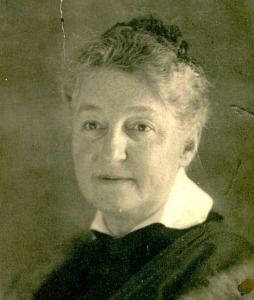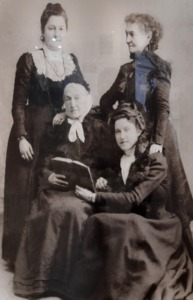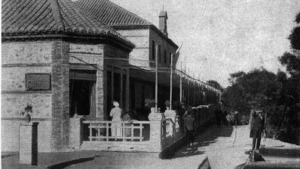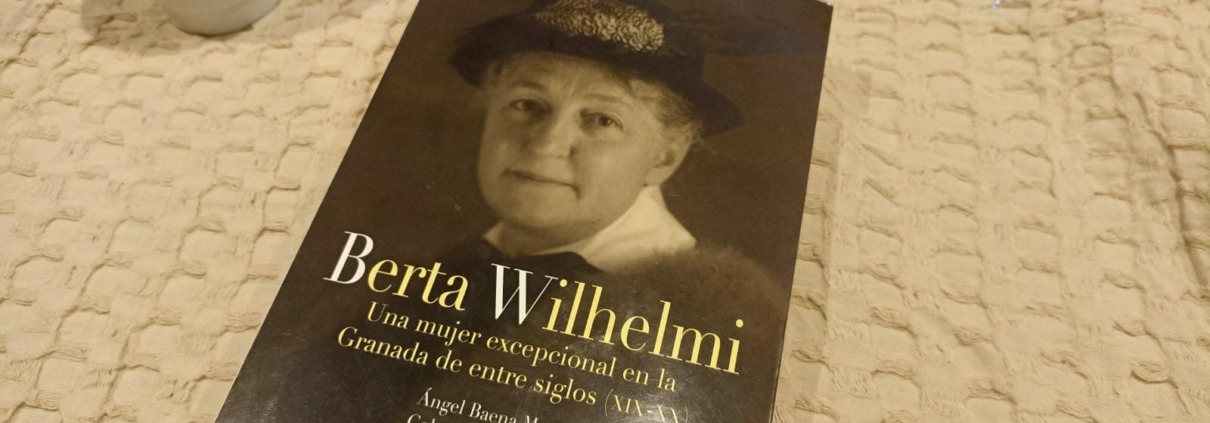Berta Wilhelmi, an exceptional woman in Granada between the centuries
With this title it was presented last December the biographical book by Berta Wilhelmi whose authors are Angel Baena and Gabriel Gomez.
The presentation could not be anywhere other than Pinos Genil. This town is linked to this great woman almost since her arrival in Granada. I found the love and respect that all its inhabitants still have for it very moving.
To make a quick portrait Of this woman, it should be noted that throughout her life, she created and led companies, founded schools and libraries, built a tuberculosis sanatorium, defended equality between men and women, promoted and hosted gatherings of intellectuals, founded canteens and school camps and much more.
All this framed in the end of the s. XIX and beginning of the XX. Surrounded by an old and intransigent society.
She was a woman free of prejudices, bold, determined, with clear ideas, respectful of other ideas, altruistic and generous. But above all to which we Grenadians owe a lot.
From this perspective, it is surprising that until very recently she was a totally unknown woman in Granada. The objective of this article is precisely to make known this woman who would be exceptional at any time and who changed the city of Granada in many aspects.
The history of Granada will never be complete without her.

Arrival of Berta Wilhelmi in Granada
Of German origin, he was born on June 25, 1858 in Schriesheim, near Heidelberg.
In this same year her family moved to Granada, although Berta stayed in Germany in charge of her grandmother.
It is difficult to know exactly, but everything indicates that Berta arrived in Granada in 1871.
His father Philipp Ferdinand Wilhelmi y Fromme (for the people of Granada, Don Fernando), an engineer and great entrepreneur, buys and improves the Blanqueo paper mill and expands it with the construction of two more.
On the other hand, his mother Hedwig Karoline Henrich, writer and free thinker and defender of social rights and equality for women.
And finally her grandmother Albertine Röslin, actress and poet, gradually forged the character of this free woman.
At the age of 19, he married with Fernando Dávila de León and Zea, aristocratic family from Granada. However, Berta is a Protestant and does not want to renounce her religion despite the great social pressure that she undoubtedly had to suffer. For this reason the wedding is celebrated with a papal bull.
Throughout his life, he welcomed a large group at his home on Paseo de la Bomba and at his gatherings. of intellectuals and scholars. Among them: Fernando de los Ríos, Gloria Giner, Antonio Gonzales Prats, Alejandro Otero Fernández, Manuel Ángeles Ortiz, José Maria Rodríguez Acosta, Hermenegildo Lanz, Laura de los Ríos Italian, Belgian and English consuls and many more.
She was a fighting woman who never gave up despite the many problems, misfortunes, and eventualities she encountered throughout her life.
Berta as a businesswoman.
Since the death of her father in 1896, Berta has been in charge of leading the paper mills.The first years with her husband. But after her death in 1998 she alone.
Years before, she had been involved in the management of factories.
He stood out in thecholera epidemic management,who arrived in Granada in 1886. It is at this moment that he began to implement the hygienist measures that he had surely already learned during his training in Germany and Switzerland.
He begins to install latrines with running water, adopts strict cleaning measures in factories, prohibits crowds, changes the diet of workers, etc. Something totally unusual and revolutionary at the time.
Later in a second epidemic, this time of smallpox, in 1901, he reapplied these measures, along with vaccination. Its workers are the only ones vaccinated in Pinos Genil.
In this area mortality and contagion is lower. In this way it is demonstrated what are the measures to be taken before these events.
But if there is something that defines this woman, it is her ability to work. His activity does not stop and in years of prosperity for his paper mills, he takes the opportunity to create, together with his son, the power station next to the Bleaching factory. This plant gives light not only to his factory, but also to the surrounding towns.
Second marriage and divorce
In 1906, at the age of 48, she married Eduardo Dominguez for the second time. He is one of his workers and a foreman in his factory. Once again she proves to be a free woman and outside of conventions.
In any case, this second marriage does not last too long and ends up getting divorced.

His dedication to children
Among his many projects of a philanthropic nature, those related to the education of boys and girls without resources stand out.
In 1913 he created in Pinos Genil amixed school, a popular library with 600 books, distributes healthy breakfasts,winter clothing creates school soup
,that end up being school canteens, organizes excursions and cultural events.
Already in 1886 he had obtained private financing, from the Provincial Council Council and even from the Queen Regent Maria Cristina to inauguratesome colonies in Almuñecar. The second in Spain and the only ones managed by a woman and mixed.
He firmly believes in social regeneration through education.
Not only does it fight against illiteracy, but it also fights for children to have better health.
There is a phrase by Berta that sums up her concept of education very well: “for a child to grow in values and carve out a future, they must be warm and fed, be healthy and feel happy”. If we think a little we realize that sadly this phrase is still valid.
His tenacious stance in favor of gender equality
For Berta, this equality began with the recognition of 3 points.
- Women’s right to education
- Education in equal degrees and content
- Allow them the paid exercise of skills
This third point, although it is obvious, was not defended by all liberal currents.
These ideas were perfectly embodied in her speech at the Pedagogical Congress of 1892 where she defended the aptitude of women for all professions.

Illness that claimed the life of his brother when he was only 21 years old marked the life of his family. He dedicated his life and a large part of his fortune to the fight against this disease.
After a great struggle, investigations, search for the best trained staff, the perfect place, and at 65 years of age, Berta achieves her dream of creating a Sanatorium for tuberculosis patients in Alfaguara. The inauguration took place on May 17, 1923.
Make it one of the best in Europe and the results are excellent.
The necessary investment amounted to 170,000 pesetas. An astronomical figure at that time.
I highly recommend reading this book.
If you want to know more details about this woman or many of the women who have left their mark on our city, come with me on my visits every Friday.
If you want more information do not hesitate to contact me: Whatsapp 617359043or follow me on mi web o en Instagram ……





Leave a Reply
Want to join the discussion?Feel free to contribute!